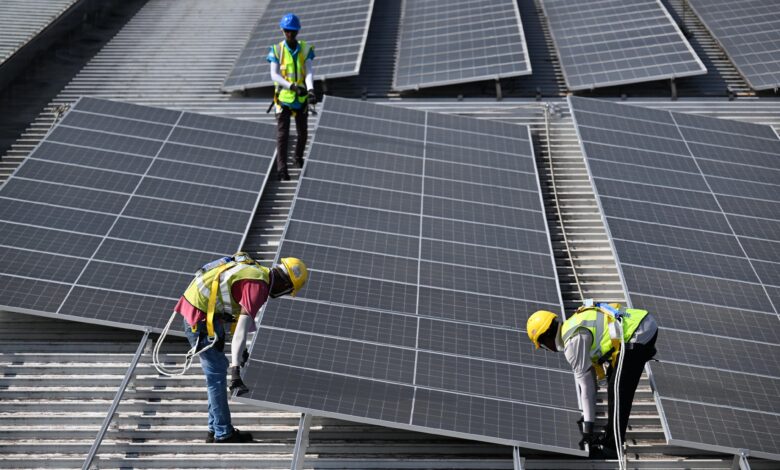Liberalise South-east Asia’s energy sector to attract more private finance: BlackRock official

SOUTH-EAST Asia needs to adopt a market-based approach towards its energy sector to attract more private capital into the region’s energy transition, said Philipp Hildebrand, vice-chairman of asset manager BlackRock.
With the exception of Singapore and the Philippines, South-east Asia’s energy sector is largely nationalised, with most energy assets being state-owned and electricity prices set through power purchase agreements. However, Hildebrand noted on Wednesday (Apr 17) that jurisdictions with nationalised energy systems and power grids face greater challenges in attracting private capital.
Speaking at the Financing Asia’s Transition conference, which is part of Temasek’s Ecosperity sustainability event, he explained: “You can create the projects, you can create the renewable energy, but then, you struggle connecting into the grid. And that seems to be one of the big challenges in many Asian countries, South-east Asia in particular.”
He cited how the Philippines has been able to attract more private capital after it liberalised its energy market.
The Philippines was also where South-east Asia’s first coal phase-out transaction occured, with Acen Corporation fully divesting from the South Luzon Thermal Energy Corporation coal power plant.
Hildebrand was responding to a question during a panel on what needs to be done to catalyse more investments into grid modernisation and battery storage – projects which typically receive less funding than renewable energy.
A NEWSLETTER FOR YOU

ESG Insights
An exclusive weekly report on the latest environmental, social and governance issues.
He also suggested having a registry of successful energy transition projects, as well as the willingness to experiment with various innovative financing mechanisms – such as blended financed vehicles – as ways to close the financing gap.
At the same panel, Dilhan Pillay, chief executive officer of Temasek, said that many energy transition projects in emerging markets are either marginally bankable or unbankable.
What needs to be done is to get the marginally bankable projects to be bankable, and the unbankable ones to be less so.
He suggested restructuring the ratio of debt and equity financing, known as mezzanine finance, as a way of allowing sponsors to get a decent return on capital deployed, or at least returns that are concessionary-oriented.
He cited how Pentagreen Capital, a debt financing platform set up by HSBC and Temasek, had managed to structure a US$30 million deal to develop 490 megawatts’ worth of solar power projects in the Philippines through mezzanine finance.
The deal has an option to raise the committed amount to US$100 million to fund additional greenfield solar projects, which could further catalyse another US$300 million in financing, said Pillay.
He added: “US$30 million getting to US$300 million-odd in financing – so it is (from) one to 10. It’s a huge issue. If we can have more and more institutions focus on that sort of structuring, perhaps we can find the solutions to bridge part of the gap that arises in allowing for marginally bankable projects to become bankable.”





